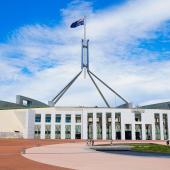
CHEAT SHEET
- Disaster politics. In the United States, the Deepwater Horizon disaster prompted the government to overhaul oil and gas regulators, distancing them from the industry.
- A collaborative alternative. Australia, which boasts a lower incident rate in the oil and gas industry, features closer ties — Suzanne Hillier considers the companies she regulates “key stakeholders.”
- Insufficient penalties. In an industry where profits are measured in the hundreds of billions, monetary penalties may not drive action.
- Keeping abreast of tech advances. Regulators like NOPSEMA worked with industry partners to guide the implementation of new facilities, such as floating natural gas platforms, due in 2017.
The relationship between regulatory and business lawyers can be contentious in the United States and other countries. The rapport between the two in Australia is generally more collaborative. Hillier goes as far as calling the companies she regulates “key stakeholders” that NOPSEMA is always trying to engage.
Suzanne Hillier, general counsel of National Offshore Petroleum Safety and Environmental Management Authority (NOPSEMA), was interviewed for this article.
Disasters drive action
NOPSEMA oversees about 150 companies that drill for oil and gas in Australia’s national waters. It was formed on January 1, 2012, and is the country’s first national regulator for health and safety, well integrity and environmental management for offshore oil and gas operations. Prior to NOPSEMA’s formation, various state governments, instead of a federal regulator, conducted the government’s oversight. That meant that each oil and gas producer was held to different standards in each state or territory. “If you were operating in Western Australia, the Western Australian government regulated it differently from the government in Victoria. That doesn’t necessarily lead to best practice regulation,” Hillier explains.
The impetus for a nationwide regulatory agency was significantly driven by two factors: the 2009 Montara H1 wellhead disaster in the Timor Sea on the northern shore of Western Australia, and the Macondo Deepwater Horizon oil spill that killed 11 people in the Gulf of Mexico in 2010.
The Australian approach to regulation stands in contrast to the US version. Whereas Australia values collaboration with the oil and gas industry, the United States took actions that distanced the regulatory agency from the industry it oversees. Yet the sophistication of the oil and gas drilling technology requires a close relationship.
Following the Deepwater disaster, US President Barack Obama overhauled the Minerals Management Service, which was renamed the Bureau of Ocean Energy Management, Regulation and Enforcement, and then later split into the Bureau of Ocean Energy Management (BOEM) and the Bureau of Safety and Environmental Enforcement (BSEE).
BOEM promotes energy independence, environmental protection and economic development through responsible, science-based management of offshore conventional and renewable energy and marine mineral resources. Oil and natural gas companies need to obtain leases from the agency prior to drilling.
BSEE works to promote safety, protect the environment and conserve resources offshore through regulatory oversight and enforcement.
After the Deepwater Horizon spill, the revenue collection office was split off from the oversight division to eliminate conflicts of interest. US environmentalists say the agency remains too close to the people it is supposed to regulate. Representative Edward Markey, a Democrat from Massachusetts, said that the US government should require more of oil companies than “unreliable blowout preventers and a containment system that has only been used once and can’t be deployed past 8,000 feet.”
Yet the accident rate of US offshore drilling is several times higher than that of Australia, Canada, Norway and the United Kingdom.
Offshore oil rig disasters
Two major offshore oil rig disasters drove change in regulation. They were the 2009 Montara H1 wellhead disaster in the Timor Sea, on the northern shore of Western Australia, and the Macondo Deepwater Horizon oil spill that killed 11 people in the Gulf of Mexico in 2010.
The Montara oil spill is considered one of Australia’s worst oil disasters. The oil leak lasted 74 days and the Australian Department of Resources, Energy and Tourism estimated that the Montara oil leak could have been as high as 2,000 barrels a day.
The oil rig was owned by Seadrill, a Norwegian-Bermudan company, and operated by PTTEP Australasia (PTTEPAA), a subsidiary of PTT Exploration and Production.
The first four attempts to plug the leak failed, but PTTEPAA pumped approximately 3,400 barrels of mud into a relief well on the fifth attempt on November 3, 2009, which stopped the leak. A 1,400-meter cement plug permanently capped the leak.
The Deepwater Horizon oil spill is considered the largest accidental marine oil spill in the history of the petroleum industry. The US government estimated that the total discharge was 4.9 million barrels. It flowed for 87 days before being capped on July 15, 2010.
BP, the well’s operator, paid $18.7 billion in fines to the US government and five US states, the largest corporate settlement in US history, in July 2015. That is in addition to the $43.8 billion that BP had set aside for criminal and civil penalties and cleanup costs. The company said its total pre-tax charge for the spill now stands at $53.8 billion.
Best practices
The oil and gas industry is a major contributor to Australia’s economy. It employed 22,406 people, and generated AU$38.4 billion at the end of June 2014.
NOPSEMA has a staff of about 120 people with a small legal team of five people. In addition to being general counsel, Hillier is also the ethics officer, as well as the fraud control officer — responsible for the fraud control plan and managing fraud within the organization and is a member of the executive leadership team.
While it is a step forward to have a national regulatory body for offshore oil and gas drilling, there are areas that NOPSEMA does not oversee. If a wellhead is close to shore, it is still subject to that state’s oversight, not NOPSEMA’s. “We would like to be the organization that regulates everything sitting on and in the water basically,” Hillier explains.
The other area of note is at the international level. NOPSEMA is a member of the International Regulators’ Forum, where they network with regulators from other countries. “Recently we’ve had someone from the ANP in Brazil come over and spend three weeks in our office and she shared with us how her organization works and we shared with her how our organization worked,” Hillier says.
The rate of advancement is another challenge for regulators. A new development in oil and gas drilling is floating liquefied natural gas facilities where has is processed on the open ocean rather than piped back to the mainland. The United Kingdom has had legislation in place that enables companies to work with its regulator to develop designs for floating liquefied natural gas facilities.
Australia recently green lighted a massive floating liquefied natural gas facility. It will be the world’s first. Shell’s US$13 billion “Prelude” is 475 kilometers off Western Australia’s coast and will be operational in 2017 with the capacity to generate six million tons of liquids a year. “It weighs roughly six times as much as the largest aircraft carrier,” Hillier says, adding that worked with other country’s regulators to make sure the right approach was taken when the Prelude was designed.
An unplanned career
Hillier never imagined she would be general counsel of a regulatory agency. In fact, she never had much of a plan.
She grew up on northwest coast of Tasmania and considers herself to be somewhat of an environmentalist. She attributes her rural upcoming with instilling a love of nature, and even used to go bushwalking and fishing as a teenager. She studied law and science but “never had a grand plan to be a lawyer.” Her love of the environment drove her to study for a master’s in environmental law at the University of Sydney in New South Wales.
Hillier landed a job with the New South Wales Environment Protection Authority where she helped coordinate complex issues like the ecologically sustainable development. Roles in government continued to dominate her career; she moved to the NSW Department of Health and later moved across the country to join her sisters in Western Australia, where she worked for the Office of the Minister for Environment and Heritage and the Department of Health.
It was only when she joined NOPSEMA in March 2010 that she really started to view law as her profession. In particular, “joining ACLA [now ACC Australia (ACLA)] and networking within my profession really changed my view of how I felt about my career and I can now say that I am very happy practicing law,” she says.
Hillier’s ability to network not only with government lawyers but industry lawyers has allowed her to flourish in her role. US lawyers can probably imagine networking with their regulatory counterparts in the same way that Australian lawyers prize and benefit from.
Regulation
Even though NOPSEMA works closely with industry, violations do occur. Every facility regulated by NOPSEMA is subject to two inspections a year. When companies are not compliant, NOPSEMA’s focus is to bring them back into compliance, and in accordance with its graduated enforcement policy. Prosecution is generally used as a last resort.
However, it does occur.
NOPSEMA’s legislative framework does not allow for the imposition of criminal penalties. NOPSEMA prosecuted PTTEP AA, the company responsible for the 2009 Montara wellhead platform explosion. More recently, the organization prosecuted Stena Drilling Australia Pty Ltd for their failure to implement and maintain systems of work that were safe and without health risks. The Magistrates’ Court of Victoria imposed a criminal penalty of AU$330,000 against Stena Drilling following the August 2012 accident that killed two oil rig workers.
For an industry that measures its income in billions, a few hundred thousand dollars is sometimes not much of a disincentive. Especially since the infraction resulted in the loss of live, acknowledging that the penalties were reviewed post Montara and there have been increases in penalties and future plans to strengthen the regulations also.




